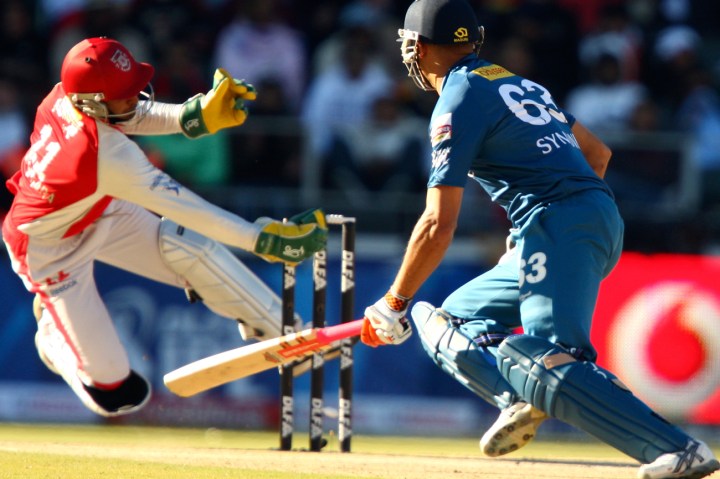Sport
The changing face of cricket

On Friday, after the first day of the third test between Australia and India, several significant questions concerning the future of cricket were answered. Some more surprising than others. By STYLI CHARALAMBOUS.
Since the rock ‘n roll inception of the Indian Premier League in 2008, cucumber sandwich eating purists of the game of cricket have been casting a condescending glance over the ghastly creation of 20-over cricket. With flashy fireworks, dazzling pom poms of boundary-parading cheerleaders and stratospheric player salaries, the shorter format and its IPL progression soon had the plums falling from MCC members’ mouths.
Initially branded a gimmick that would never catch on, it wasn’t only the jacket-and-tie wearing members of cricket’s governing body that failed to take the format seriously. The first domestic competition was run in England’s county circuit in 2003, and was an instant success, resulting in a dramatic increase in declining crowd attendance and the steady capture of a younger audience. And yet, the format was still not being taken seriously. In the first full international T20 match, played between Australia and New Zealand in February 2005, the silly perception of the game was evident when both sides took to the field in retro gear, complete with fake moustaches and matching hairdos.
And even before the IPL was founded, several prominent test players, notably Ricky Ponting and Jacques Kallis, openly belied the importance of the concise version of the game. As a result, neither player dedicated the necessary tweaks to their own games to accommodate the pace and creativity that T20 cricket required, even as the format surged in worldwide popularity. This soon resulted in the 2007 axing of King Kallis from the Proteas’ T20 World Cup squad and led to the outright retirement of Ponting from the shorter format in favour ODI and test cricket, in 2009.
With the astronomical salaries being banded about for the three-week tournament, the IPL became the second highest paid sporting league in the world, behind America’s NBA. Millions of new TV fans from across the globe watched in awe as each tournament literally rained down with DLF maximums (sixes). The attractiveness of the game amongst fans and the cash windfall for players meant T20 was here to stay. The question remained however, how the paddle sweeps, Dilshan (overhead) scoops and general swashbuckling nature of T20 would affect the other two formats of the game.
Given the stunning rise in popularity of T20, many purists feared the death knell of test cricket and began questioning the need for ODI’s. In fact, some international stars from struggling nations were bypassing international duty to avoid missing out on the IPL extravaganza. With the advent of T20 came the requirement for faster paced scoring and more creative bowling strategies to combat the aggressive batsmen donning blinged-up helmets and sparkling leg pads. Those who failed to adapt were left by the wayside, as Kallis soon found out, being dropped after string of low (and slow) scores for his franchise, Royal Challengers Bangalore in the 2008 tournament.
But in that uncertain post-IPL birth period, something was stirring in the belly of cricket’s pinnacle challenge, test cricket. The stirring was a natural progression from that which began with possibly the greatest test team of all-time, the Australian test XI under Steve Waugh and later, Ricky Ponting. This group of players changed the way test cricket was being played. No longer were drawn-out sessions struggling to reach two runs per over acceptable. The days of Geoffrey Boycott settling in at one end to block the living crap (and spectators entertainment) out of the ball were officially done with.
Watch: Highlights of David Warner’s innings of 180 vs. India
Australia believed that by scoring at close to four runs per over for several sessions of a test innings, they would be able to put the opposition under extraordinary pressure that could effectively take the game away from opponents within the first day or two. Coupled with a talent of a once-in-a-generation line-up and armed with this brave new approach, Australia reigned supreme for almost a decade.
With the advent of the T20, players were now being exposed to situations were teams were required to chase down totals of 13 or even 15 runs per over, and succeeding. The psychological shackles of cricket had been broken. Players were scoring 50s off 30-plus balls with regularity and setting totals previously inconceivable.
The format also gave birth to a new breed of player: T20 specialists that could somehow step in to the middle and blast boundaries from the word go. Players like Australia’s David Warner built their reputations as master blasters, capable of destroying bowling attacks with consummate ease and ferocity.
Soon T20 itself began to evolve, from a “hail-mary-agricultural-heave-across-the-line” kind of cricket, to a game where players could still score quickly with elegant straight and cover drives. Players like Kallis realised they could still play their natural game, albeit a little more rapidly, and the latter editions of the IPL saw classic stroke players like Kallis, Tendulkar and even Rahul Dravid top the list of run getters with strike-rates to match.
By now, the effect on test cricket was plain to see. One such example was at the most recent Newlands test match, where South Africa all but trounced Sri Lanka by an innings. The Proteas scored at over five runs per over in their opening session and Jacques Kallis, once derided for slow batting, brought up his century at almost a run a ball.
And this past Friday, after India continued their incredulous fall from cricket grace, in stepped “T20 specialist” David Warner to carve out his own little piece of cricketing history. His selection was a bold move, brought on mostly by the prolonged string of poor performances by incumbent Phil Hughes and an injury to other regular opener, Shane Watson. In reply to a dismal 161 all out by the capitulating Indians, Warner and his partner Ed Cowan scored at more than seven runs to the over for most of the final session of the day.
Warner went on to notch up an unbelievable century of just 64 balls to record the fourth fastest 100 in test cricket, and the quickest by an opener. By the end of the day’s play, Australia were 149 without loss and the game was all but over for the hapless tourists. India were toast and 180 runs (off 159 balls) later, Warner had undoubtedly answered the questions as to whether T20 was good for the game of cricket and whether T20 specialists could make the leap to test cricket. Resoundingly, T20 is here to stay, and with it, smack the other formats of the game into shape. DM
Photo: Andrew Symonds of the Deccan Chargers is run out by Kumar Sangakkara of the Kings XI Punjab during the 2009 Indian Premier League (IPL) T20 cricket match in Johannesburg, May 17, 2009. REUTERS/Siphiwe Sibeko



















 Become an Insider
Become an Insider